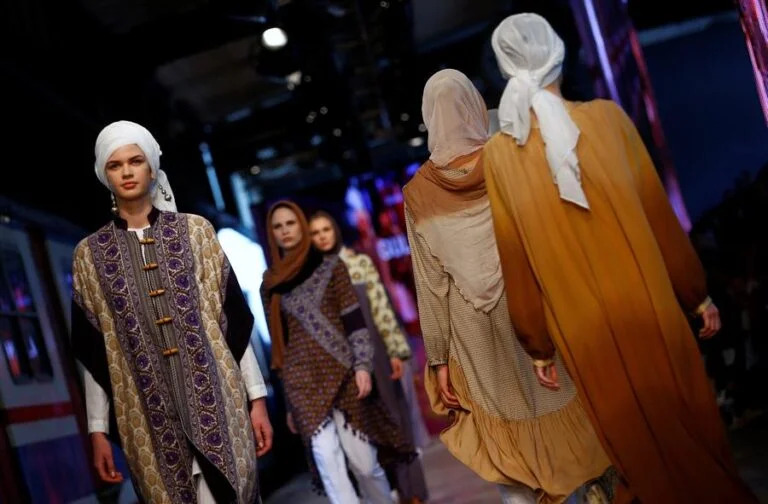Grow your business with the Discover newsletter
Logistics advice & insights straight to your inbox
Subscribe now
There is nothing quite like fashion week to bring the sector into focus and set the tone for upcoming trends. Each show is the culmination of prolonged hard work, creative effort, and commercial acumen as both established and emerging designers pull the curtains off their latest collections. Top models strut down the runway to an onlooking crowd of editors, buyers, influencers, and other tastemakers who could make or break success in today’s competitive marketplace.
Among the staples of haute couture, hijabs and scarves are increasingly taking centre stage. Propelled by social media, ecommerce, and mounting Muslim spending power, modest wear has entered the cultural mainstream. Muslim consumers were estimated to have purchased US$277 billion in apparel in 2019, with the number expected to rise to US$311 billion by 2024. Also in 2019, fashion search engine Lyst reported a 90 percent spike in interest for the term “modest fashion”, which further experienced a five-fold increase on Pinterest UK within the first quarter.
This rise in demand has not gone unnoticed as brands scramble to provide the supply. H&M broke new ground in 2015 by including a hijab-clad model in its advertising campaign, while DKNY, Net-a-Porter, Tommy Hilfiger, Uniqlo, and Zara produced lines catering to the Ramadhan festivities.
2016 however was a year of watershed moments. Dolce & Gabbana caused a stir with the reveal of an abaya collection, a marker in time representing the transition of modest wear from niche consideration to high priority for fashion labels. Later in September, Indonesia’s Anniesa Hasibuan made history at New York Fashion Week, presenting a show where every look featured a hijab.
It was then only natural that the trailblazing genre of clothes earned its own spotlight. Turkey’s Ozlem Sahin Ertas and Indonesia’s Franka Soeria combined to establish Modest Fashion Weeks, with a travelling concept that has become the marquee event of the modest fashion calendar. First held in Istanbul in 2016, the movement has since spanned London, Dubai, Jakarta, and Amsterdam, with New York and Paris as debut destinations in 2021.



Aidijuma’s creations on show at the 2016 Istanbul Fashion Week (Reuters/Murad Sezer)
Its success has paved the way for similar endeavours worldwide. 2017 saw our neighbour across the Causeway host the Singapore Modest Fashion Week as well as a collaboration between Singapore Fashion Week and MODESTyle for three runway shows and a trunk show. The United States followed suit in 2019 with the inaugural Miami Modest Fashion Week, founded by Malaysian-born entrepreneur Norsham Mohamad-Garcia. While there was point when the style fusing fashion and faith once raised eyebrows, it is now becoming a norm at fashion weeks from Melbourne to Russia.
As an Islamic hub, it comes as no surprise that Malaysia enjoys strong representation. Jovian Mandagie, Naelofar Hijab, Nurita Harith, Rico Rinaldi, Fiziwoo, Mimpikita, Aidijuma, and Batek by Rasta Rashid are just some of the biggest local names to keep the Jalur Gemilang flying internationally.
The Malaysia External Trade Development Corporation (MATRADE) has been an instrumental figure behind the scenes. The national export promotion agency regularly coordinates overseas missions to connect homegrown businesses with potential buyers and stockists, on top of sponsoring attendance at industry affairs, in this case fashion weeks.
With sustainability and inclusivity evolving beyond buzzwords into essential realities of a more globalised society, it is clear that modest fashion is not just here to stay: it is set to grow. As the stars of modest fashion weeks have demonstrated, the style is universal, and companies plying the space would do well to emulate it in their ambitions too.